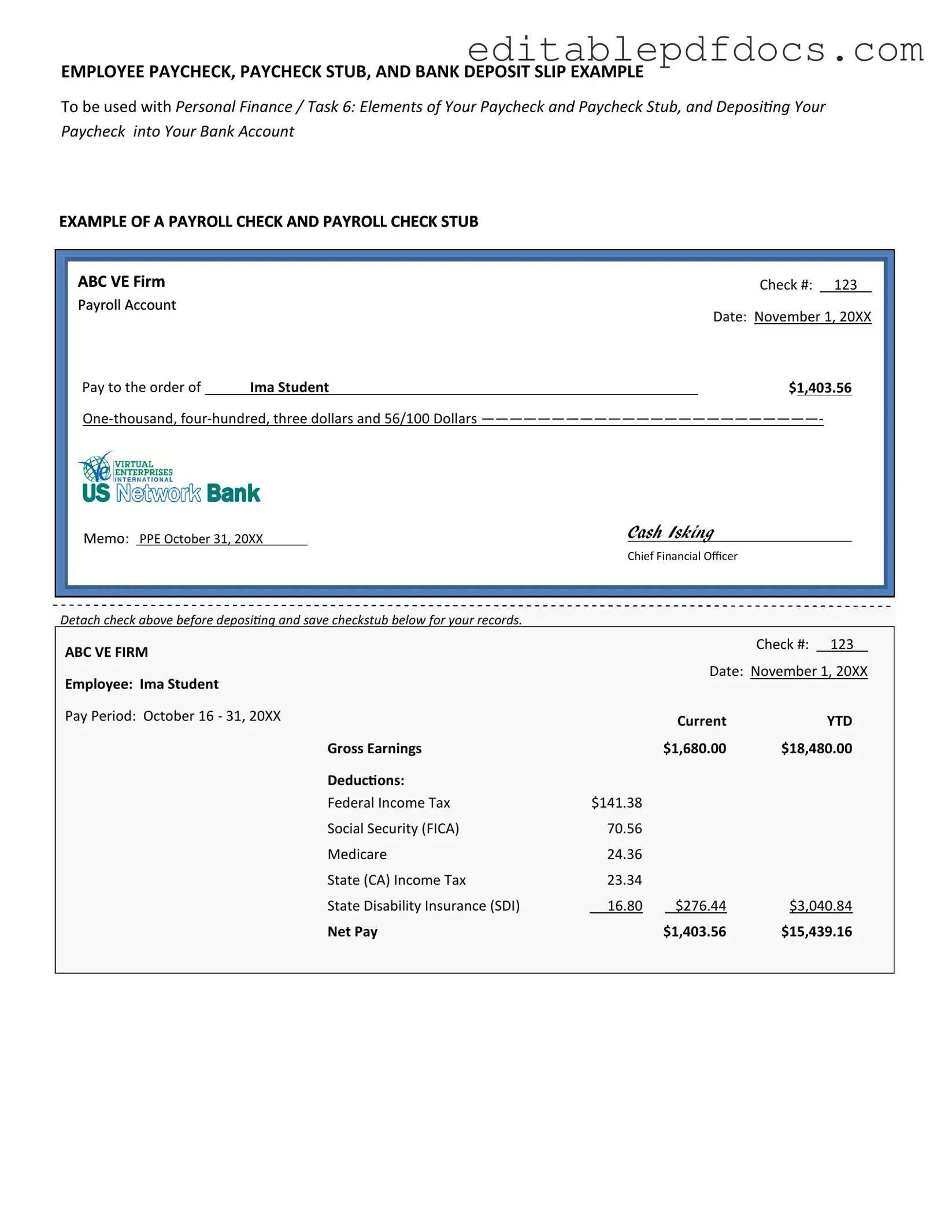Filling out a Payroll Check form can seem straightforward, but many individuals make common mistakes that can lead to delays or issues with payment. One frequent error is providing incorrect personal information. This includes misspellings of names, wrong Social Security numbers, or incorrect addresses. Such mistakes can complicate payroll processing and may even result in tax complications.
Another mistake is failing to report all hours worked accurately. Employees might forget to include overtime or additional hours, leading to underpayment. It's essential to keep a detailed record of hours worked to ensure proper compensation.
Some individuals neglect to check the payment method. Whether opting for direct deposit or a physical check, it's crucial to ensure that the chosen method is clearly indicated. Confusion here can delay payment and cause unnecessary frustration.
Inaccurate calculations of deductions can also occur. Employees should carefully review their tax withholdings and other deductions, such as retirement contributions or health insurance premiums. Miscalculating these amounts can affect take-home pay and tax obligations.
Another common oversight is not signing the Payroll Check form. Without a signature, the form may be deemed incomplete and could be rejected by the payroll department. Always double-check that all required signatures are present before submission.
People often forget to update their information when life changes occur. For instance, marriage, divorce, or the birth of a child can impact tax filing status and deductions. Keeping personal information current is vital to ensure accurate payroll processing.
Additionally, some employees do not keep a copy of their submitted Payroll Check form. This can create problems if discrepancies arise later. Retaining a copy provides a reference point for any future discussions regarding payment or deductions.
Another mistake is overlooking deadlines. Payroll departments often have strict cut-off dates for submissions. Missing these deadlines can result in delayed payments, which can cause financial strain.
Some individuals also fail to communicate with their employer regarding any discrepancies or questions about the Payroll Check form. Open communication can prevent misunderstandings and ensure that any issues are resolved quickly.
Lastly, not reviewing the completed form before submission can lead to multiple errors. Taking a few extra moments to check for accuracy can save time and prevent complications down the line. Attention to detail is key when filling out the Payroll Check form.
